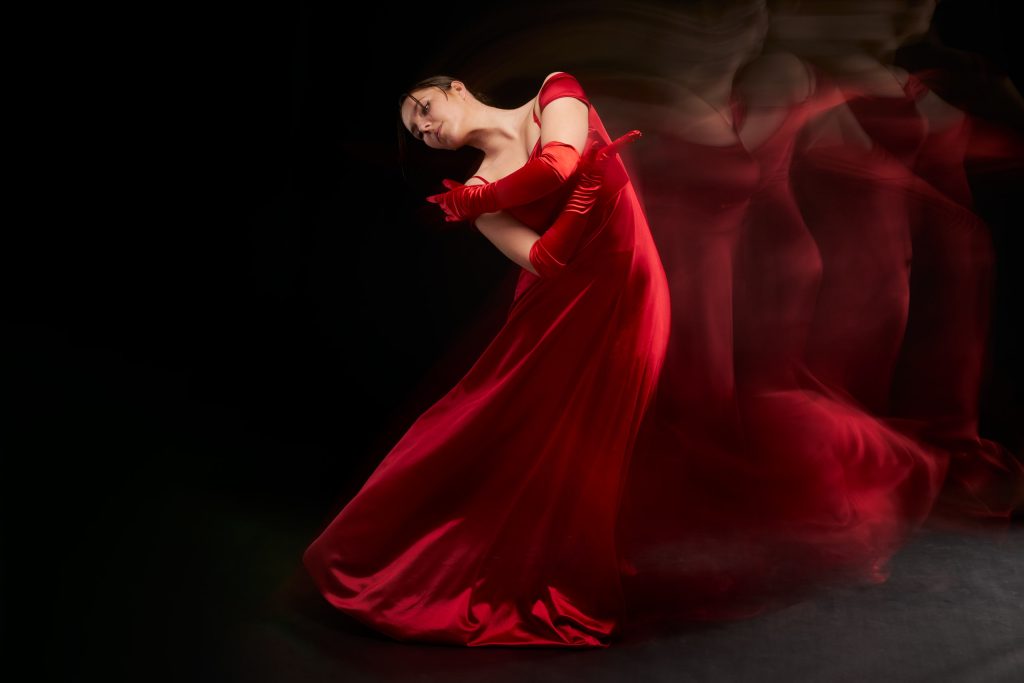
How to Use Motion Blur in Dance Photography

Motion blur can be a powerful tool in dance photography, allowing you to capture the fluidity, rhythm, and intensity of movement in a single frame. By intentionally blurring parts of your image, you can convey the dynamism and artistry of dance, making your photos feel more alive. Here’s a guide to using motion blur effectively in dance photography.
1. Understand the Concept of Motion Blur
Motion blur occurs when a moving subject is captured at a slow shutter speed, causing the motion to appear as a soft streak in the image. In dance photography, motion blur can emphasize the direction and flow of movement, creating an abstract yet beautiful representation of the dancer’s performance. Learning to control and use this effect can add a unique dimension to your work.
2. Select the Right Shutter Speed
Shutter speed is the primary factor that influences motion blur. For dance photography, start with a shutter speed between 1/10 and 1/50 of a second, depending on the speed of the movement and the amount of blur you want. A slower shutter speed will result in more pronounced motion blur, while a faster one will freeze more of the action.
3. Use Manual Mode
Manual mode allows you to control both the shutter speed and aperture, giving you the flexibility to experiment with different blur effects. Start with a medium aperture (around f/5.6 to f/8) to ensure enough depth of field for capturing detail while allowing enough light to enter. Adjust your ISO as needed to keep the image properly exposed without introducing noise.
4. Find the Right Moment to Capture Motion
Timing is crucial in dance photography. Observe the dancers to understand the flow of their movements and look for moments where they reach peak motion. For example, capturing a dancer mid-spin or during a leap can create dramatic motion blur that highlights the energy of the movement. Anticipating these moments helps you capture the peak of action and emotion.
5. Experiment with Panning
Panning involves following the dancer’s movement with your camera while using a slow shutter speed. This technique keeps the dancer relatively sharp while blurring the background, creating a sense of speed and focus on the dancer. Panning works best with linear movements, like a dancer gliding or running across the stage, as it emphasizes the direction of motion.
6. Combine Sharp and Blurred Elements
Adding a mix of sharp and blurred elements creates a dynamic contrast in your image. For example, you can focus on a dancer’s face or hands while allowing their body or limbs to blur. This approach works well when you want to capture specific expressions or gestures while still conveying movement, adding layers of interest to your photos.
7. Experiment with Lighting for Dramatic Effect
Lighting plays a significant role in motion blur photography. Use stage lighting or a controlled light source to illuminate specific parts of the dancer or create dramatic shadows. Backlighting or side lighting can help outline the dancer’s form, emphasizing the flow of motion in the blurred areas and making the image more visually striking.
8. Try Different Angles and Perspectives
Shooting from different angles can enhance the sense of movement in your photos. For example, shooting from a low angle can make the dancer’s movements appear larger and more powerful, while a high angle can showcase intricate footwork. Don’t be afraid to experiment with perspectives to add depth and dynamics to your motion-blur shots.
9. Use a Tripod for Added Stability
A tripod can provide the stability needed for consistent motion blur results, especially in low-light conditions or when working with slower shutter speeds. By keeping the camera steady, you can capture the blur of the dancer’s movement without unintentional camera shake, resulting in a clearer and more intentional effect.
10. Edit Thoughtfully to Enhance the Motion
During post-processing, enhance the motion blur effect by adjusting contrast, brightness, and color saturation to bring out the details of the dancer’s form and flow. Subtle tweaks to shadows and highlights can further emphasize the movement while retaining the mood and lighting of the original scene.
